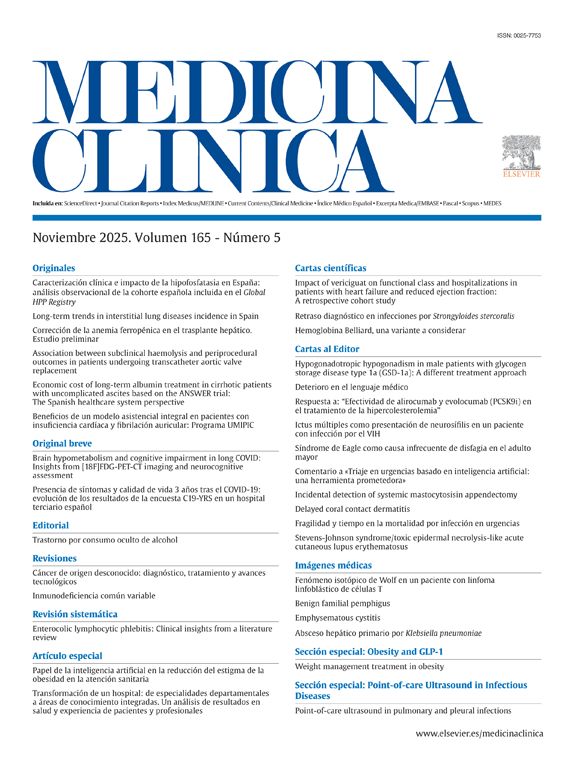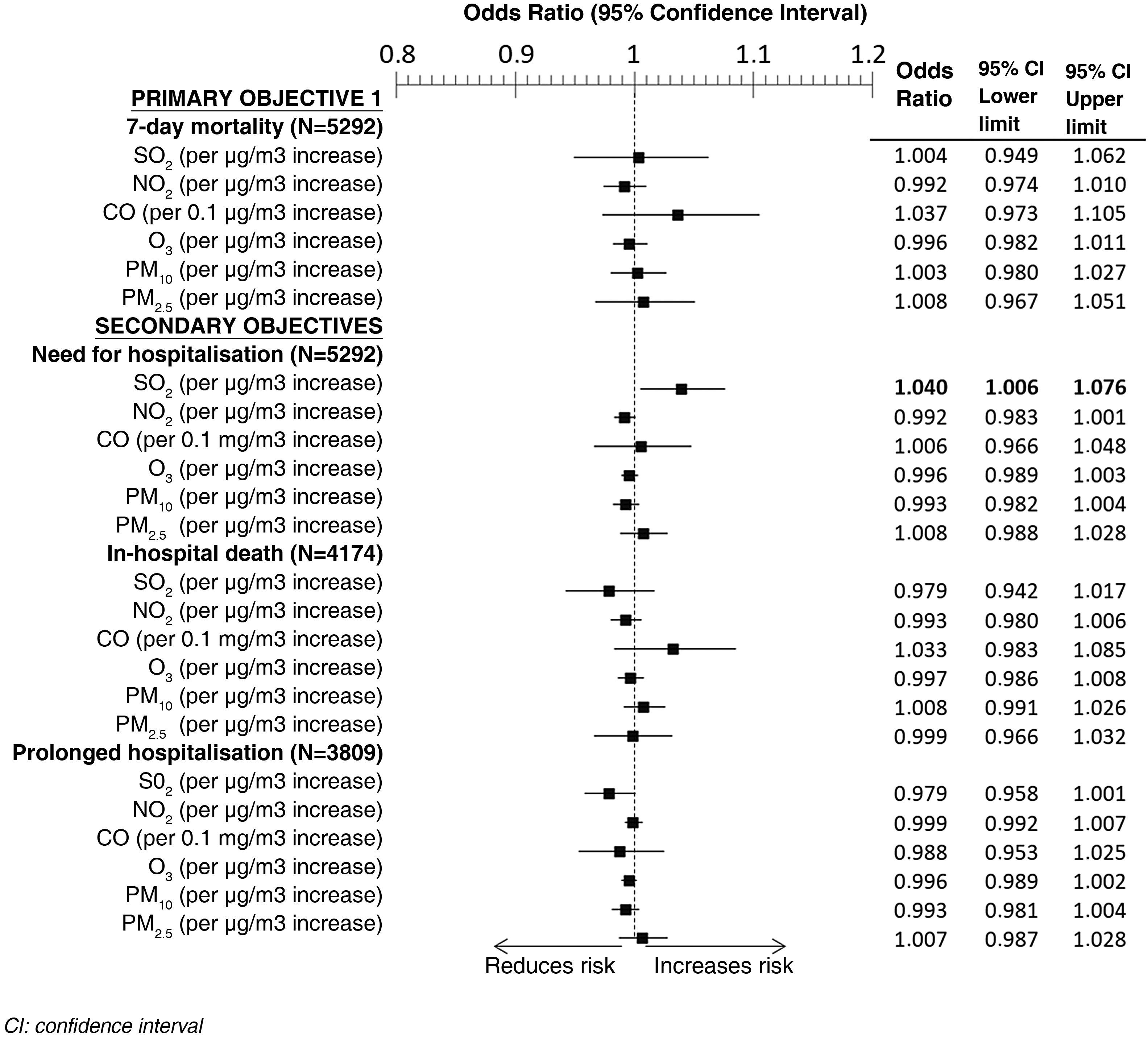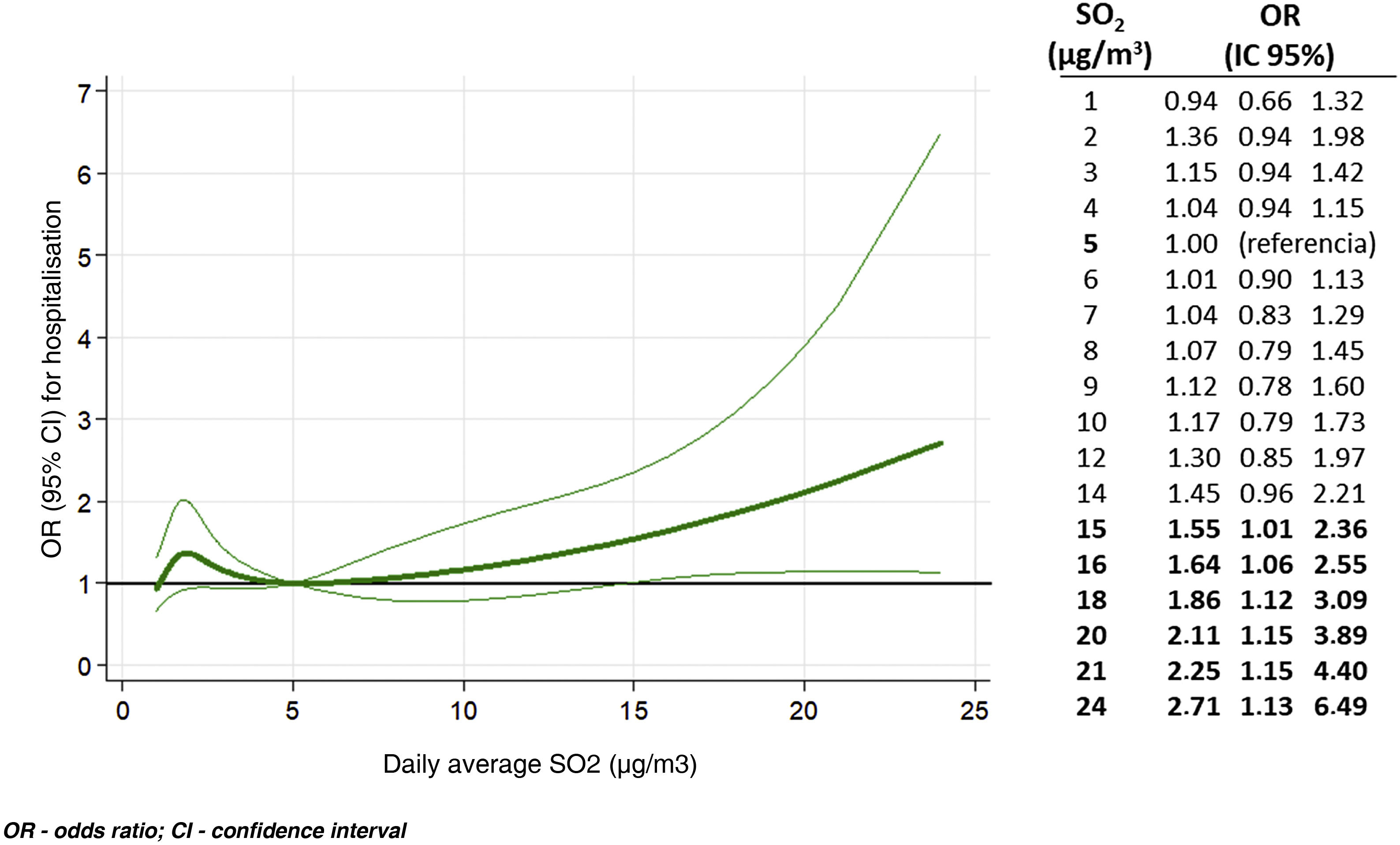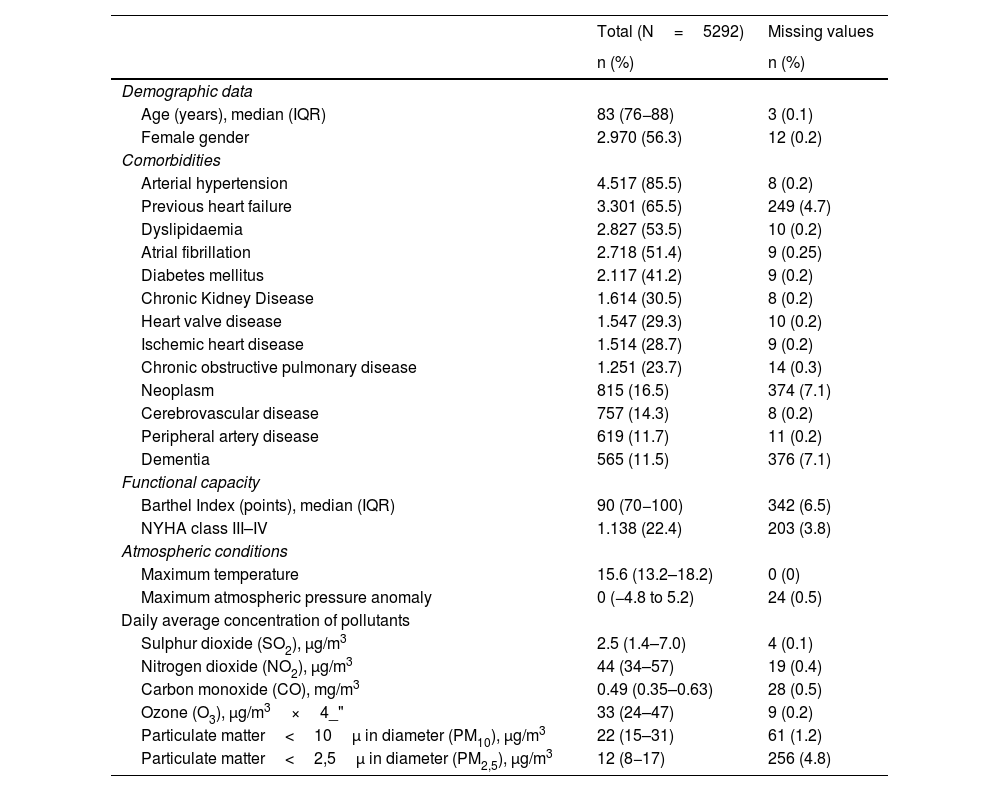To analyze whether the high levels of air pollutants are related to a greater severity of decompensated heart failure (HF).
MethodPatients diagnosed with decompensated HF in the emergency department of 4 hospitals in Barcelona and 3 in Madrid were included. Clinical data (age, sex, comorbidities, baseline functional status), atmospheric (temperature, atmospheric pressure) and pollutant data (SO2, NO2, CO, O3, PM10, PM2.5) were collected in the city on the day of emergency care. The severity of decompensation was estimated using 7-day mortality (primary indicator) and the need for hospitalization, in-hospital mortality, and prolonged hospitalization (secondary indicators). The association adjusted for clinical, atmospheric and city data between pollutant concentration and severity was investigated using linear regression (linearity assumption) and restricted cubic spline curves (no linearity assumption).
ResultsA total of 5292 decompensations were included, with a median age of 83 years (IQR=76–88) and 56% women. The medians (IQR) of the daily pollutant averages were: SO2=2.5μg/m3 (1.4–7.0), NO2=43μg/m3 (34–57), CO=0.48mg/m3 (0.35–0.63), O3=35μg/m3 (25–48), PM10=22μg/m3 (15–31) and PM2.5=12μg/m3 (8–17). Mortality at 7 days was 3.9%, and hospitalization, in-hospital mortality, and prolonged hospitalization were 78.9, 6.9, and 47.5%, respectively. SO2 was the only pollutant that showed a linear association with the severity of decompensation, since each unit of increase implied an OR for the need for hospitalization of 1.04 (95% CI 1.01–1.08). The restricted cubic spline curves study also did not show clear associations between pollutants and severity, except for SO2 and hospitalization, with OR of 1.55 (95% CI 1.01–2.36) and 2.71 (95% CI 1.13–6.49) for concentrations of 15 and 24μg/m3, respectively, in relation to a reference concentration of 5μg/m3.
ConclusionExposure to ambient air pollutants, in a medium to low concentration range, is generally not related to the severity of HF decompensations, and only SO2 may be associated with an increased need for hospitalization.
Analizar si la exposición a contaminantes del aire en 2 grandes ciudades españolas está relacionada con la gravedad de las descompensaciones de la insuficiencia cardiaca (IC).
MétodoSe estudiaron pacientes con IC descompensada en urgencias de 4 hospitales de Barcelona y 3 de Madrid. Se recogieron datos clínicos (edad, sexo, comorbilidades, situación funcional basal), atmosféricos (temperatura, presión atmosférica) y de contaminantes (SO2, NO2, CO, O3, PM10, PM2,5) el día de atención en urgencias. La gravedad de la descompensación se estimó mediante la mortalidad a 7 días (indicador primario) y la necesidad de hospitalización, mortalidad intrahospitalaria y hospitalización prolongada (indicadores secundarios). Se investigó la asociación ajustada por datos clínicos, atmosféricos y ciudad entre concentración de contaminantes y gravedad, mediante regresión logística (asunción de linealidad) y curvas spline cúbicas restringidas (no asunción de linealidad).
ResultadosSe incluyeron 5.292 descompensaciones, con edad mediana de 83 años (RIC=76–88) y 56% mujeres. Las medianas (RIC) de los promedios diarios de contaminantes fueron: SO2=2,5μg/m3 (1,4–7,0), NO2=43μg/m3 (34–57), CO=0,48mg/m3 (0,35–0,63), O3=35μg/m3 (25–48), PM10=22μg/m3 (15–31) y PM2,5=12μg/m3 (8–17). La mortalidad a 7 días fue del 3,9%, y la hospitalización, la mortalidad intrahospitalaria y la hospitalización prolongada, del 78,9, 6,9 y 47,5%, respectivamente. El SO2 fue el único contaminante que mostró asociación lineal con la gravedad de la descompensación, ya que cada unidad de incremento supuso una OR para necesidad de hospitalización de 1,04 (IC 95% 1,01–1,08). El estudio mediante curvas spline cúbicas restringidas tampoco mostró asociaciones nítidas entre contaminantes y gravedad, excepto para SO2 y hospitalización, con OR de 1,55 (IC 95% 1,01–2,36) y de 2,71 (IC 95% 1,13–6,49) para concentraciones de 15 y 24μg/m3, respectivamente, en relación con una concentración de referencia de 5μg/m3.
ConclusiónLa exposición a contaminantes del aire ambiente, en un rango de concentraciones medio a bajo, en general no está relacionado con la gravedad de las descompensaciones de la IC, y solo el SO2 podría estar asociado a una mayor necesidad de hospitalización.










